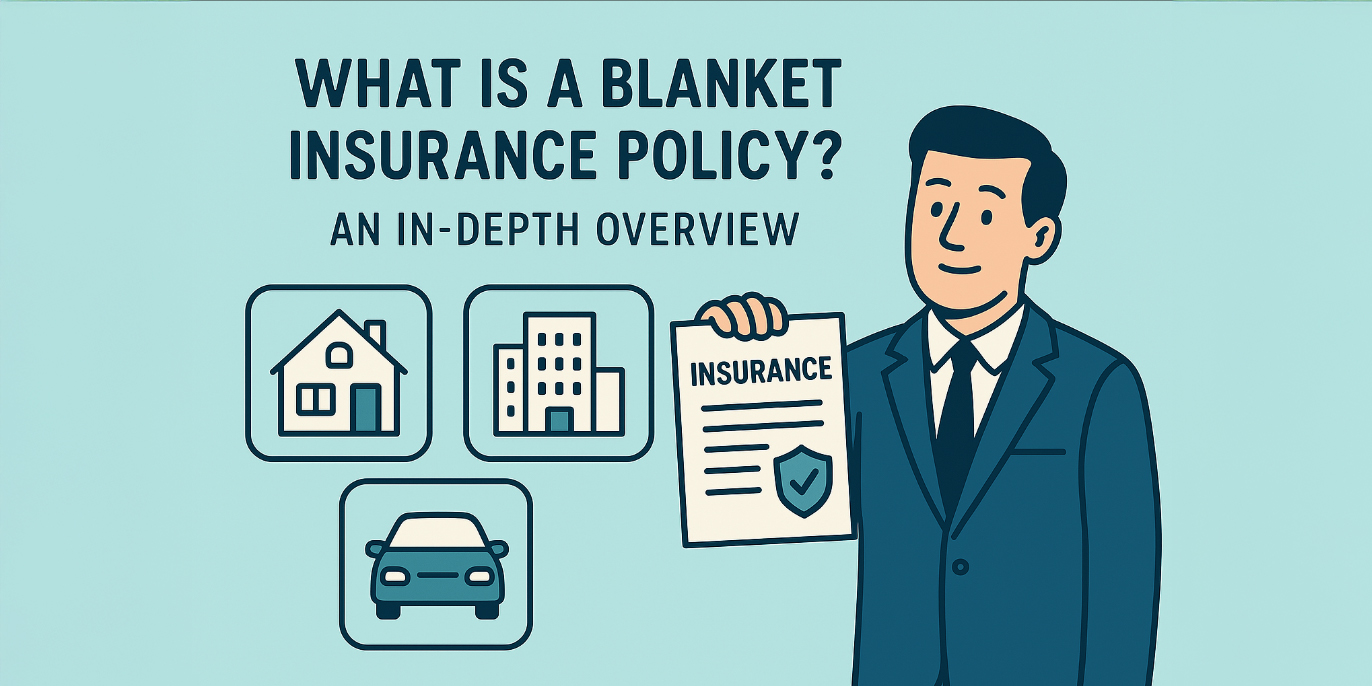Get Started
Follow these simple steps to get started.
- 1
- 2
- 3
Create Account: Step 1 of 3

A Blanket insurance policy is an arrangement that covers multiple assets or properties under a single limit. It has become especially popular among businesses and individuals looking for a unified plan that offers broader protection. Risk managers often choose this strategy to consolidate oversight across various holdings—such as car dealerships, country clubs, or agricultural properties—so they don’t have to juggle multiple separate policies.
This article clarifies what a Blanket insurance policy is, why it’s relevant for professionals in many industries, and how it provides a helpful tool in managing risk. We’ll examine its key components, illustrate real-world examples, and share best practices to give carriers and policyholders insight into how this coverage performs, whether for commercial property insurance or homeowners insurance.

A Blanket insurance policy acts as a single contract that protects various items or locations under one overall coverage limit. Traditional property policies usually separate coverage by location or asset category, but a Blanket approach merges everything into one overarching limit. This setup can simplify premium payments and claims, since fewer documents need to be managed. It also adds flexibility: if a loss affects more than one location, the total limit can respond without being capped at one property’s individual limit.
Insurance carriers may charge higher premiums for Blanket coverage because of its broader scope and higher coverage limits. When determining premiums, carriers look at factors like the combined value of the assets, the likelihood of multiple losses happening at once, and how comfortable they are with the total risk. For policyholders with large real estate portfolios, inventory, or business personal property, a Blanket insurance policy can create a more cohesive plan and avoid coverage gaps. If one location experiences a loss bigger than expected, the entire policy limit can be used, unlike separate policies that limit each location’s coverage.
Below is a table comparing a Blanket insurance policy with a more traditional property insurance setup. The table highlights differences in coverage scope, administrative requirements, and premiums.
| Aspect | Blanket | Scheduled |
|---|---|---|
| Coverage Limit | Single combined limit for all assets | Separate limits for each location or property |
| Premium Calculation | Can be higher, reflecting combined risk | Might be lower per property, but can add up overall |
| Flexibility | Highly adaptable for multi-site losses | Typically restricted by individual location limits |
| Risk of Underinsurance | Higher if overall valuations are off | Each site has a set limit, making tracking simpler |
| Scope of Protection | May include general liability plus commercial property insurance | Often requires multiple policies for various coverages |
Many commercial property owners favor a Blanket insurance policy if they have multiple sites. For instance, a retail chain might hold one policy that covers all store locations, including inventory. This simplifies renewals, claims, and daily administration. When a localized event damages one store, the policy’s total limit applies, which can be an advantage if that loss would exceed an individual site’s limit under separate policies.
Large manufacturing plants with multiple buildings also see the benefits, as Blanket coverage can encompass equipment, materials, and finished goods under one plan. If one facility is damaged, the coverage can handle potentially bigger claims without being confined to a smaller, location-specific limit.
Similarly, franchise operations use Blanket insurance policies to unify protection for multiple sites, and homeowners can structure a policy to include not only the dwelling itself but also personal possessions and liability coverage.

Blanket coverage provides a total limit for covered property, while scheduled coverage is used for high-value items with specific coverage limits
Blanket policies can cover multiple buildings, personal property, equipment, livestock, and even different locations for businesses
Blanket insurance is typically more expensive than insuring items individually, but it can offer cost savings by combining multiple policies into one
Yes, landlords can use blanket insurance to cover multiple rental properties under one policy
The insure-to-value requirement typically means you need to insure your properties or items for at least 80% or 90% of their total replacement cost to qualify for blanket coverage
Follow these simple steps to get started.
Create Account: Step 1 of 3
Loading...